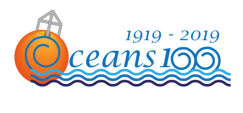
Teaching
Open Days:
Are you interested in the physics, biology or chemistry of the oceans?
Would you like to know what we teach and how we teach it?
Visit the University during an Open Day to meet our staff, hear about the
science of the oceans and learn about our degree programmes.
More details.
My main teaching responsibilities are:
Year 1:
ENVS103 (Key Skills)
I contribute to initial tutorials for Ocean Sciences students.
Year 2:
ENVS204 (Research and Career Skills)
This is the year 2 tutorial module. I organise the main semester 1
assignment on scientific data plotting and report writing, using
data from the northeast New Zealand shelf to investigate wind-
driven upwelling of cold, nutrinet-rich water.
ENVS220 (Sampling the Ocean)
Taught jointly with Prof. Claire Mahaffey and Prof. George Wolff.
We provide a background in how the physics, chemistry and
particles of the ocean are sampled, with a focus towards the main
Sea Practical (ENVS349) that Oceans students carry out at the
end of year 2.
ENVS245 (Oceanography, Plankton and Climate)
I teach this jointly with Prof. Claire Mahaffey. Our aim is to get
students to step outside their experience as terrestrial animals,
and instead think about how planktonic marine life deals with the
challenges of living in a dense, turbulent fluid.We begin with the
inherent “stickiness” of seawater experienced by planktonic life,
and then move on to look at how plankton live in different ocean
environments (e.g. the shallow shelf seas, the shelf edge, the
open ocean), how plankton influence Earth’s climate, and how our
changing climate is affecting plankton distributions.
Year 3:
ENVS349 (Sea Practical)
Jointly taught by Prof. Claire Mahaffey, Dr. Pascal Salaun and
me. Students are taken to NW Scotland, to carry out boat-based
surveys investigating the oceanography and biogeochemistry of
the Firth of Clyde and adjacent Clyde Sea.
ENVS377 (Ocean Sciences Research Project)
All ocean sciences staff offer research projects to year 3 students.
I generally supervise projects that use data collected during my
own research expeditions, or that use simple numerical models of
ocean physics and biogeochemstry.
Year 4/MSc:
ENVS402 (Masters Research project)
This is the main research project module for the Year 4 students
(Masters in Ocean Science). In semester 1 students develop their
ideas on what their research project will be, and write a literature
review to provide a context for their work. The semester ends with
a short oral presentation on the project background and their
research plans. In semester 2 the bulk of the research is carried
out. The aim is to write a scientific paper, targetted to a particular
journal. The assessment of this paper is carried out in the same
way as as scientists we work through the publication process.
Students submit a draft manuscript, which is reviewed by their
project supervisor and one other staff member. This provides the
student with 2 reviews of the manuscript (in the same way as we
would review manuscripts for journals), which the students needs
to respnd to. The final submission is a revised manuscript and a
“response to reviewers” document.
ENVS414 (Modelling Processes in Oceans and Climate)
I contribute sections on developing a 1-D vertical model of the
ocean surface mixed layer. This is done using Matlab. By the end
of the 3 weeks all students have a working 1-D model that allows
them to carry out an assignment on the latitudinal and seasonal
changes in the depth of the ocean surface mixed layer. Prof. Ric
Williams teaches a section on developing a Matlab model of the
ocean’s carbon cycle, and uses it to forecast climate responses to
different carbon emission scenarios.
ENVS485 (Human Impacts on Environments)
For 2022/23 I presented recent research on how different
oceanographic environments support important commercial
fisheries.

























